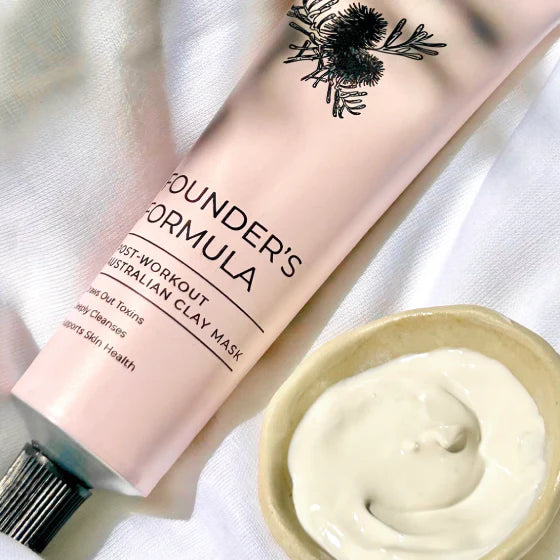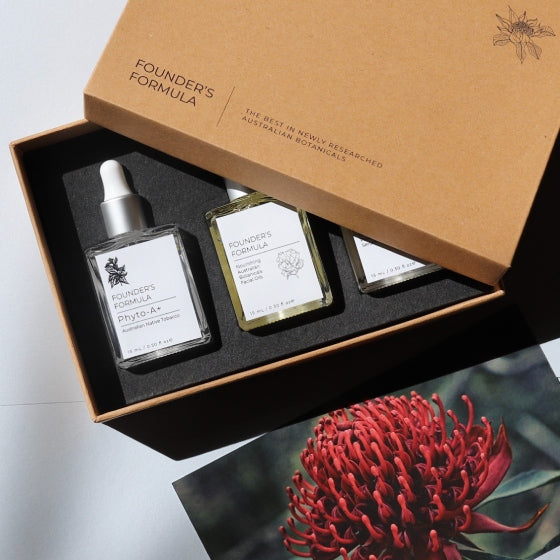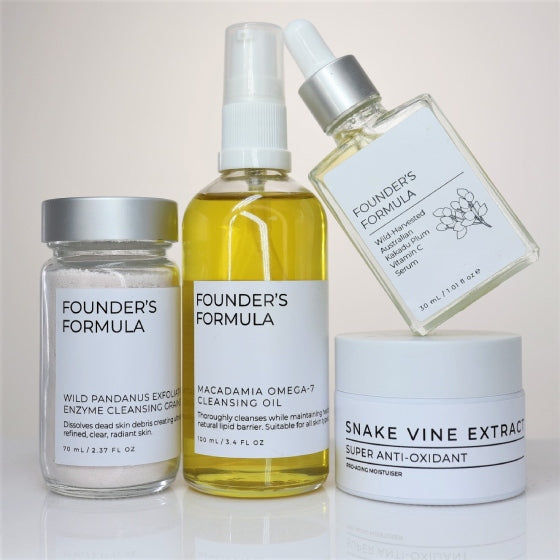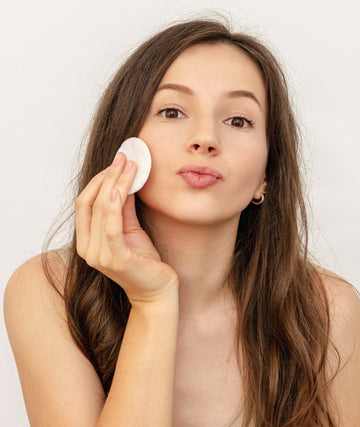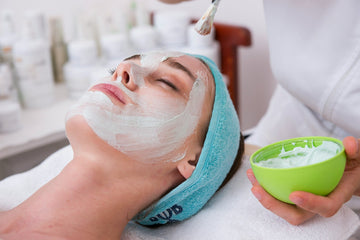Clay masks have long been a go-to step for deep skin detox. They help draw out impurities, tighten pores and give the skin a cleaner, more refined look. When used properly, they can make your complexion feel fresh and smooth and give a visible glow without needing harsh scrubs or synthetic exfoliants.
But for many people, clay masks come with a trade-off—tightness, flaking or an overly dry feel after rinsing. These side effects can make skin feel stripped rather than soothed. The good news is that over-drying isn’t an unavoidable outcome. With a few smart steps, you can still enjoy the benefits while keeping your skin comfortable, soft and balanced.
Understanding How Clay Masks Work
Clay masks are all about detoxing the skin. Whether your face is feeling congested, oily or dull, clay helps soak up excess sebum while lifting out trapped dirt and dead skin cells. The result is cleaner pores and a smoother appearance.
There are different types of clay, and each one works a bit differently.
- Kaolin clay is one of the gentlest. It’s great for sensitive skin or those trying clay masks for the first time. It absorbs oils without drawing too much moisture from the skin.
- Bentonite clay is stronger. It swells when wet and pulls impurities from deep within the pores. It suits oily or acne-prone skin but might be too drying for drier types.
- Green clay, sometimes called French green clay, is super absorbent and often used for very oily skin types.
- Pink clay, a mix of red and white clay, sits comfortably in the middle. It has mild exfoliating properties but still feels kind to the skin.
These clays all do the same basic job, but depending on your skin type, one might be a better fit than another. Over-drying usually happens when you either pick the wrong type of clay for your skin or leave the mask on for too long. A common mistake is waiting until it’s completely dry and cracking, which means it's likely pulling out water from your skin’s surface, not just oil.
Choosing the right product for your needs can make a cleaner face feel like a gentle refresh rather than a reset. The goal isn’t to dry your skin out, it’s to clear it just enough to let other products work better afterwards.
Preparation: Setting Your Skin Up For Success
Before you even reach for your mask, the prep makes a big difference. Clay on dry or unprepped skin can work too hard, leading to tightness or even surface irritation. With good prep, you help your mask do its best job without going overboard.
Start clean, but go gentle. Use a mild cleanser that removes grime and sunscreen without leaving your skin feeling squeaky or raw. A cleanser with plant-based surfactants or natural clays like kaolin can help maintain balance while still clearing out buildup.
After cleansing, layer on a light hydrating serum or essence. This may sound counterproductive—why add hydration before a deep-cleaning mask? But moisture helps protect your skin barrier and gives your skin something to hang on to while the mask does its work. If you’re using a product with native Australian ingredients like Snowflower or Desert Lime, you get the bonus of antioxidants and natural minerals that support hydration and skin health without clogging pores.
To prep your skin properly:
1. Wash with a gentle cleanser without strong acids or scrubbing grains
2. Pat your skin dry, don’t rub
3. Apply a few drops of hydrating serum or an essence layer
4. Wait 1 to 2 minutes before applying your clay mask
Giving your skin this kind of prep creates a buffer that helps prevent the mask from pulling too much moisture from the skin’s upper layers. It’s not about skipping steps, it’s about adjusting small details that protect the skin’s balance.
Application Techniques: Optimising Benefits While Minimising Dryness
Once your skin is prepped, how you apply your clay mask is just as important as what’s in it. A common mistake is wearing the mask for too long, thinking longer means better results. That usually backfires. If it stays on well past the drying phase, it may start pulling moisture from the surface of your skin, which leads to tightness or redness.
Most masks should come off when they reach the damp-dry stage. That’s when the colour has lightened but the surface hasn’t started cracking. You’ll often notice a cooler sensation across your skin. This is usually the right time to rinse.
A few tips to apply your clay mask for ideal results:
- Apply a thin, even layer. Thick applications take longer to dry and may end up pulling too aggressively on your skin
- Avoid the eye area, corners of the nose and around the mouth. These spots tend to be more delicate and dry out faster
- Stick to the wait time written on the product instructions. This timing has usually been tested for both results and skin comfort
- If parts of the mask dry faster than others, use a face mist to rehydrate those areas while the rest finishes working
It also helps to listen to what your skin is telling you during the process. If you're feeling a lot of tightness or tingling after only a few minutes, it could mean the clay is too strong for your skin type or that the mask has been left on too long. Using soft cloths or a damp sponge to gently lift the mask instead of scrubbing it off can also help keep your skin calm and smooth.
Post-Mask Care: Restore Moisture and Calmness
Once the mask is off, your skin’s more open to taking in nutrients and hydration, kind of like a sponge. This is the right moment to layer in the good stuff. The goal here is to soothe any dryness and bring things back into balance.
You’ll want to start with a hydrating toner or mist. This helps reintroduce moisture and cool any lingering warmth, particularly if your skin runs dry or sensitive. Choose something alcohol-free and infused with calming botanicals. Ingredients like Emu Apple or Finger Lime Caviar found in Australian formulations can help refresh the skin and add a wave of antioxidants without clogging pores.
Follow this step with a nourishing moisturiser. Look for creams made with lightweight botanical oils or native extracts like Snowflower or Illawarra Plum. These work to maintain hydration without choking the skin. Applying while your skin is still slightly damp helps trap more water in the outer layers. During this early spring period in Australia, when weather flips between crisp air and rising warmth, this step supports skin staying resilient and soft.
Your skin’s condition after masking is a direct reflection of what you do immediately afterwards, so don’t skip this part. Think of it as sealing in the benefits, not just winding things down.
When and How Often to Use Clay Masks
How often you use clay masks depends on your skin type and how your skin behaves through the seasons. Overuse is a common reason some people feel frustrated. They start with good skin, expect even better, but end up with flaking or irritation.
If your skin is oily or acne-prone, using a clay mask around twice a week can help keep pore buildup under control. For those with dry or combination skin, once every 7 to 10 days is usually enough. Right now, moving into spring, it’s best to reduce to once weekly use if you're noticing dry patches from cooler days lingering.
Here are signs that you're masking too often:
- Skin feels tight even after moisturising
- Flaking or redness around the nose and cheeks
- Increased sensitivity to products that didn’t bother you before
- Overall dullness even after cleansing
To prevent this, always balance out your mask routine with hydration-focused treatments. Hydration masks, botanical serums or gel creams with low pH can help keep things steady across the week. If you’re unsure, space your clay mask days away from other active-ingredient days, such as retinol or AHA use, to give your skin a break while still getting everything it needs.
How to Keep Your Skin Happy While Masking
Clay masks can bring real benefits, but their impact depends completely on how gently they’re introduced and what follows after. Thoughtful steps before, during and after application make the difference between smooth, refreshed skin and one that’s irritated or tight. Learning to tune into your skin’s real-time feedback is key. It’ll tell you when it’s had enough or what it’s craving more of.
Using products with native Australian botanicals can also give that extra support, especially when paired with a clay mask routine. They’re naturally rich in compounds that nourish without piling on heaviness. Whether you're dealing with dryness from winter ending or slight congestion slowly easing into spring, adding hydration-focused blends makes mask nights work harder for you. The right rhythm, the right mix and the right finishing touch all come together when you listen to your skin.
For those looking to enhance their skincare routine with effective and gentle options, adding a clay cleanser can make all the difference. These cleansers offer a balance between thorough cleaning and maintaining hydration, making them a great choice for sensitive or breakout-prone skin. Founder's Formula uses native Australian botanicals to help support healthy, balanced skin through thoughtful, natural formulations.
